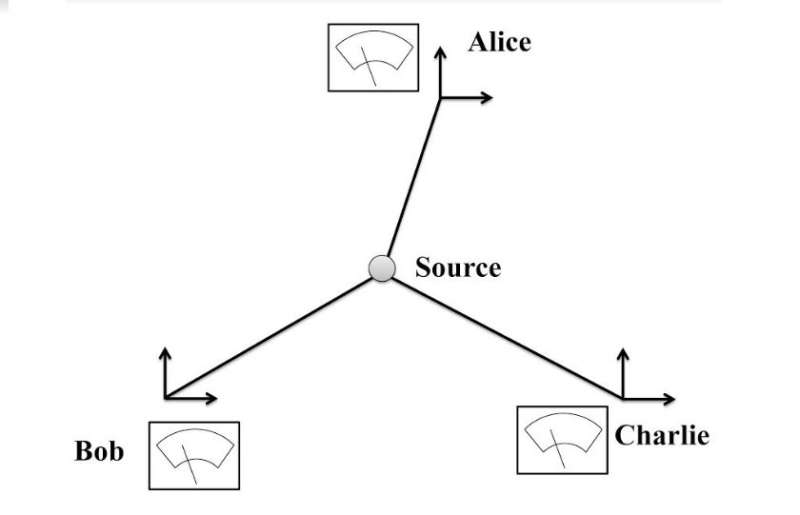February 1, 2018 feature
Generalized Hardy's paradox shows an even stronger conflict between quantum and classical physics

In 1993, physicist Lucien Hardy proposed an experiment showing that there is a small probability (around 6-9%) of observing a particle and its antiparticle interacting with each other without annihilating—something that is impossible in classical physics. The way to explain this result is to require quantum theory to be nonlocal: that is, to allow for the existence of long-range quantum correlations, such as entanglement, so that particles can influence each other across long distances.
So far, Hardy's paradox has been experimentally demonstrated with two particles, and a few special cases with more than two particles have been proposed but not experimentally demonstrated. Now in a new paper published in Physical Review Letters, physicists have presented a generalized Hardy's paradox that extends to any number of particles. Further, they show that any version of Hardy's paradox that involves three or more particles conflicts with local (classical) theory even more strongly than any of the previous versions of the paradox do. To illustrate, the physicists proposed an experiment with three particles in which the probability of observing the paradoxical event reaches an estimated 25%.
"In this paper, we show a family of generalized Hardy's paradox to the most degree, in that by adjusting certain parameters they not only include previously known extensions as special cases, but also give sharper conflicts between quantum and classical theories in general," coauthor Jing-Ling Chen at Nankai University and the National University of Singapore told Phys.org. "What's more, based on the paradoxes, we are able to write down novel Bell's inequalities, which enable us to detect more quantum entangled states."
As the physicists explain, Hardy's paradox involves inequalities that correspond to the inequalities in Bell's theorem—a theorem showing that quantum mechanics must violate either locality or realism. As previous research has shown, Hardy's paradox can be interpreted in terms of inequalities by considering the probabilities of certain events occurring. Suppose that the probabilities that A < B, B < C, and C < D are all zero. In the classical world, it would then be impossible to have A < D. But in Hardy's paradox, A < D occurs with some nonzero probability, in contrast with classical predictions.
"Put simply, Hardy's paradox states that a classically impossible sequence of events from end to end—just imagine a snake devouring its tail—as it were, are nonvanishingly possible in the quantum region," Chen said. "This is really surprising."
In the future, the physicists plan to further explore the connections between the generalized Hardy's paradox and Bell's inequalities. In regards to experiments, a group at the University of Science and Technology of China has begun to perform the photon-based experiment to verify the stronger Hardy's paradox.
More information: Shu-Han Jiang et al. "Generalized Hardy's Paradox." Physical Review Letters 120, 050403 (2018). DOI: 10.1103/PhysRevLett.120.050403, Also at arXiv:1709.09812 [quant-ph]
Journal information: Physical Review Letters
© 2018 Phys.org



















